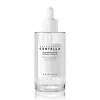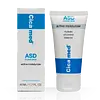What's inside
What's inside
 Key Ingredients
Key Ingredients

 Benefits
Benefits

 Concerns
Concerns

No concerns
 Ingredients Side-by-side
Ingredients Side-by-side

Water
Skin ConditioningButylene Glycol
HumectantNiacinamide
SmoothingGlycerin
HumectantTranexamic Acid
Astringent1,2-Hexanediol
Skin ConditioningBetaine
HumectantCentella Asiatica Extract
CleansingZea Mays Starch
AbsorbentXanthan Gum
EmulsifyingMicrocrystalline Cellulose
AbsorbentMannitol
HumectantPanthenol
Skin ConditioningPentylene Glycol
Skin ConditioningEthylhexylglycerin
Skin ConditioningHydroxyethylcellulose
Emulsion StabilisingMadecassoside
AntioxidantAcrylates/C10-30 Alkyl Acrylate Crosspolymer
Emulsion StabilisingArginine
MaskingHydrogenated Lecithin
EmulsifyingXylitylglucoside
HumectantAnhydroxylitol
HumectantXylitol
HumectantGlucose
Humectant3-O-Ethyl Ascorbic Acid
Skin ConditioningLactobacillus Ferment
Skin ConditioningWater, Butylene Glycol, Niacinamide, Glycerin, Tranexamic Acid, 1,2-Hexanediol, Betaine, Centella Asiatica Extract, Zea Mays Starch, Xanthan Gum, Microcrystalline Cellulose, Mannitol, Panthenol, Pentylene Glycol, Ethylhexylglycerin, Hydroxyethylcellulose, Madecassoside, Acrylates/C10-30 Alkyl Acrylate Crosspolymer, Arginine, Hydrogenated Lecithin, Xylitylglucoside, Anhydroxylitol, Xylitol, Glucose, 3-O-Ethyl Ascorbic Acid, Lactobacillus Ferment
Water
Skin ConditioningCetyl Palmitate
EmollientCetyl Alcohol
EmollientGlycerin
HumectantCaprylic/Capric Triglyceride
MaskingTridecyl Stearate
EmollientIsostearyl Alcohol
EmollientNiacinamide
SmoothingSodium PCA
HumectantSimmondsia Chinensis Seed Oil
EmollientSalicylic Acid
MaskingAloe Barbadensis Leaf Juice Powder
Skin ConditioningTridecyl Trimellitate
EmollientButylene Glycol Cocoate
EmulsifyingTocopheryl Acetate
AntioxidantSqualane
EmollientIris Florentina Root Extract
MaskingAllantoin
Skin ConditioningZinc Sulfate
AntimicrobialRetinyl Palmitate
Skin ConditioningBeta-Glucan
Skin ConditioningNeopentyl Glycol Dicaprylate/Dicaprate
EmollientXanthan Gum
EmulsifyingMaltodextrin
AbsorbentHydroxyethylcellulose
Emulsion StabilisingEthylcellulose
Hydroxyethyl Acrylate/Sodium Acryloyldimethyl Taurate Copolymer
Emulsion StabilisingPropanediol
SolventMentha Piperita Oil
MaskingCitrus Aurantium Dulcis Peel Oil Expressed
PerfumingJuniperus Virginiana Oil
MaskingCedrus Deodara Wood Oil
MaskingCedrus Atlantica Wood Oil
PerfumingPolysorbate 60
EmulsifyingAlcohol Denat.
AntimicrobialLevulinic Acid
PerfumingSodium Levulinate
Skin ConditioningSodium Phytate
Sodium Benzoate
MaskingBenzyl Alcohol
PerfumingSorbic Acid
PreservativeWater, Cetyl Palmitate, Cetyl Alcohol, Glycerin, Caprylic/Capric Triglyceride, Tridecyl Stearate, Isostearyl Alcohol, Niacinamide, Sodium PCA, Simmondsia Chinensis Seed Oil, Salicylic Acid, Aloe Barbadensis Leaf Juice Powder, Tridecyl Trimellitate, Butylene Glycol Cocoate, Tocopheryl Acetate, Squalane, Iris Florentina Root Extract, Allantoin, Zinc Sulfate, Retinyl Palmitate, Beta-Glucan, Neopentyl Glycol Dicaprylate/Dicaprate, Xanthan Gum, Maltodextrin, Hydroxyethylcellulose, Ethylcellulose, Hydroxyethyl Acrylate/Sodium Acryloyldimethyl Taurate Copolymer, Propanediol, Mentha Piperita Oil, Citrus Aurantium Dulcis Peel Oil Expressed, Juniperus Virginiana Oil, Cedrus Deodara Wood Oil, Cedrus Atlantica Wood Oil, Polysorbate 60, Alcohol Denat., Levulinic Acid, Sodium Levulinate, Sodium Phytate, Sodium Benzoate, Benzyl Alcohol, Sorbic Acid
 Reviews
Reviews

Ingredients Explained
These ingredients are found in both products.
Ingredients higher up in an ingredient list are typically present in a larger amount.
Glycerin is already naturally found in your skin. It helps moisturize and protect your skin.
A study from 2016 found glycerin to be more effective as a humectant than AHAs and hyaluronic acid.
As a humectant, it helps the skin stay hydrated by pulling moisture to your skin. The low molecular weight of glycerin allows it to pull moisture into the deeper layers of your skin.
Hydrated skin improves your skin barrier; Your skin barrier helps protect against irritants and bacteria.
Glycerin has also been found to have antimicrobial and antiviral properties. Due to these properties, glycerin is often used in wound and burn treatments.
In cosmetics, glycerin is usually derived from plants such as soybean or palm. However, it can also be sourced from animals, such as tallow or animal fat.
This ingredient is organic, colorless, odorless, and non-toxic.
Glycerin is the name for this ingredient in American English. British English uses Glycerol/Glycerine.
Learn more about GlycerinHydroxyethylcellulose is used to improve the texture of products. It is created from a chemical reaction involving ethylene oxide and alkali-cellulose. Cellulose is a sugar found in plant cell walls and help give plants structure.
This ingredient helps stabilize products by preventing ingredients from separating. It can also help thicken the texture of a product.
This ingredient can also be found in pill medicines to help our bodies digest other ingredients.
Learn more about HydroxyethylcelluloseNiacinamide is a multitasking form of vitamin B3 that strengthens the skin barrier, reduces pores and dark spots, regulates oil, and improves signs of aging.
And the best part? It's gentle and well-tolerated by most skin types, including sensitive and reactive skin.
You might have heard of "niacin flush", or the reddening of skin that causes itchiness. Niacinamide has not been found to cause this.
In very rare cases, some individuals may not be able to tolerate niacinamide at all or experience an allergic reaction to it.
If you are experiencing flaking, irritation, and dryness with this ingredient, be sure to double check all your products as this ingredient can be found in all categories of skincare.
When incorporating niacinamide into your routine, look out for concentration amounts. Typically, 5% niacinamide provides benefits such as fading dark spots. However, if you have sensitive skin, it is better to begin with a smaller concentration.
When you apply niacinamide to your skin, your body converts it into nicotinamide adenine dinucleotide (NAD). NAD is an essential coenzyme that is already found in your cells as "fuel" and powers countless biological processes.
In your skin, NAD helps repair cell damage, produce new healthy cells, support collagen production, strengthen the skin barrier, and fight environmental stressors (like UV and pollution).
Our natural NAD levels start to decline with age, leading to slower skin repair, visible aging, and a weaker skin barrier. By providing your skin niacinamide, you're recharging your skin's NAD levels. This leads to stronger, healthier, and younger looking skin.
Another name for vitamin B3 is nicotinamide. This vitamin is water-soluble and our bodies don't store it. We obtain Vitamin B3 from either food or skincare. Meat, fish, wheat, yeast, and leafy greens contain vitamin B3.
The type of niacinamide used in skincare is synthetically created.
Learn more about NiacinamideWater. It's the most common cosmetic ingredient of all. You'll usually see it at the top of ingredient lists, meaning that it makes up the largest part of the product.
So why is it so popular? Water most often acts as a solvent - this means that it helps dissolve other ingredients into the formulation.
You'll also recognize water as that liquid we all need to stay alive. If you see this, drink a glass of water. Stay hydrated!
Learn more about WaterXanthan gum is used as a stabilizer and thickener within cosmetic products. It helps give products a sticky, thick feeling - preventing them from being too runny.
On the technical side of things, xanthan gum is a polysaccharide - a combination consisting of multiple sugar molecules bonded together.
Xanthan gum is a pretty common and great ingredient. It is a natural, non-toxic, non-irritating ingredient that is also commonly used in food products.
Learn more about Xanthan Gum